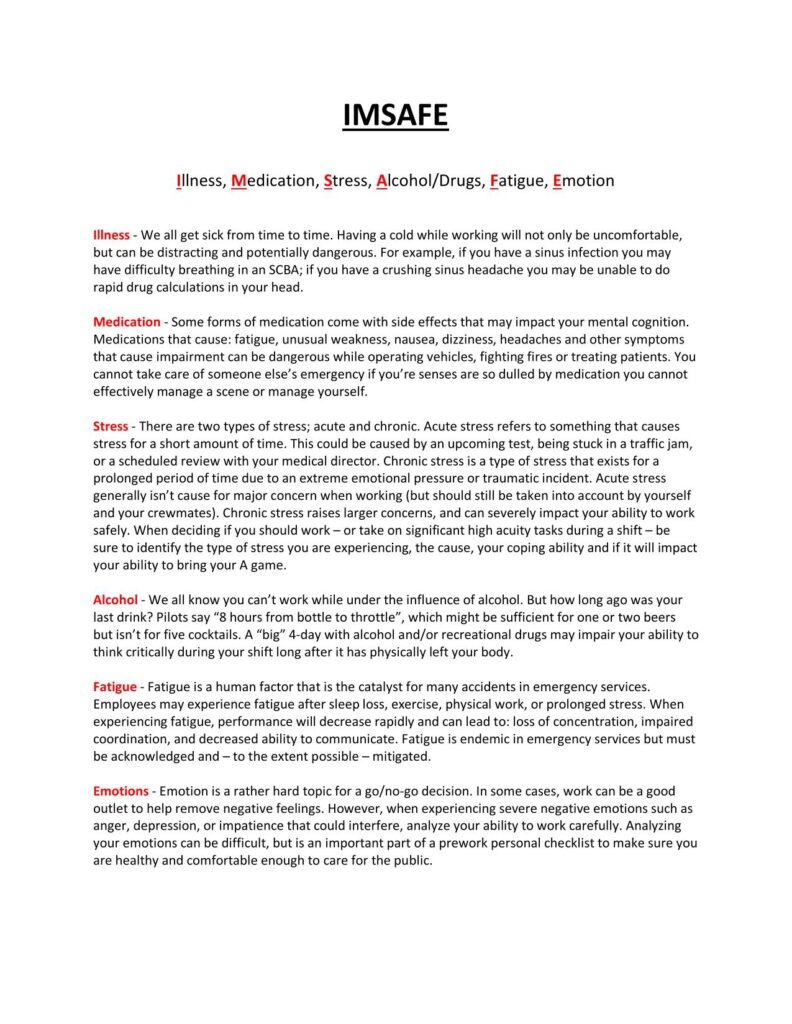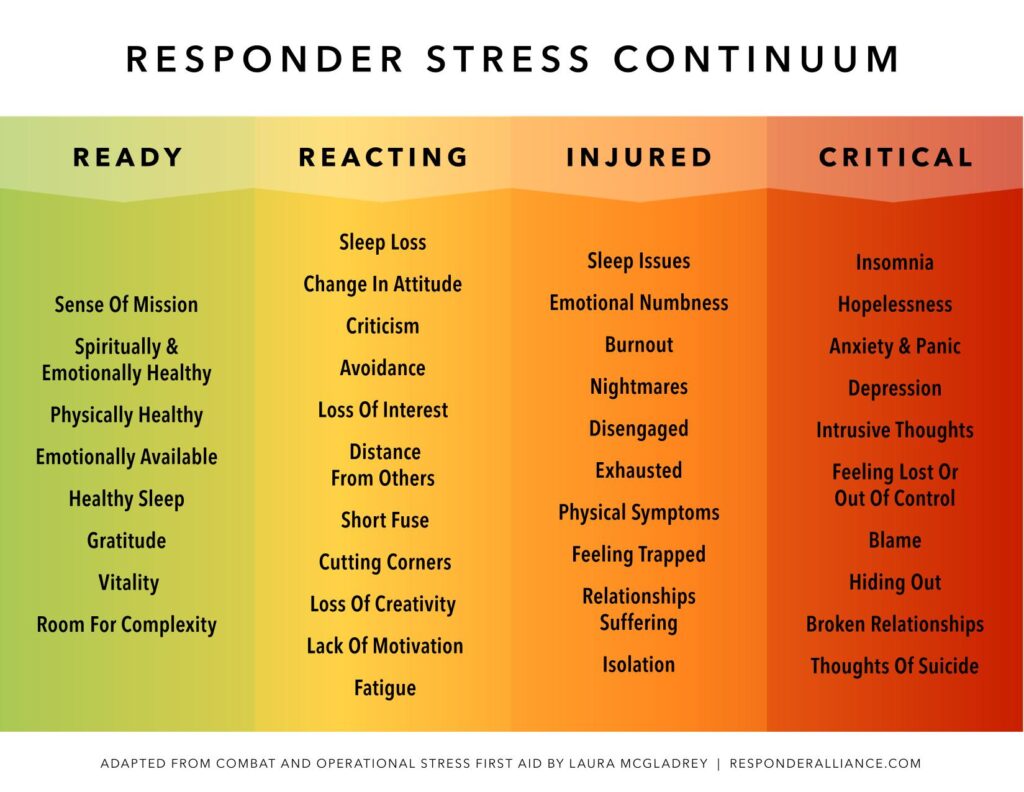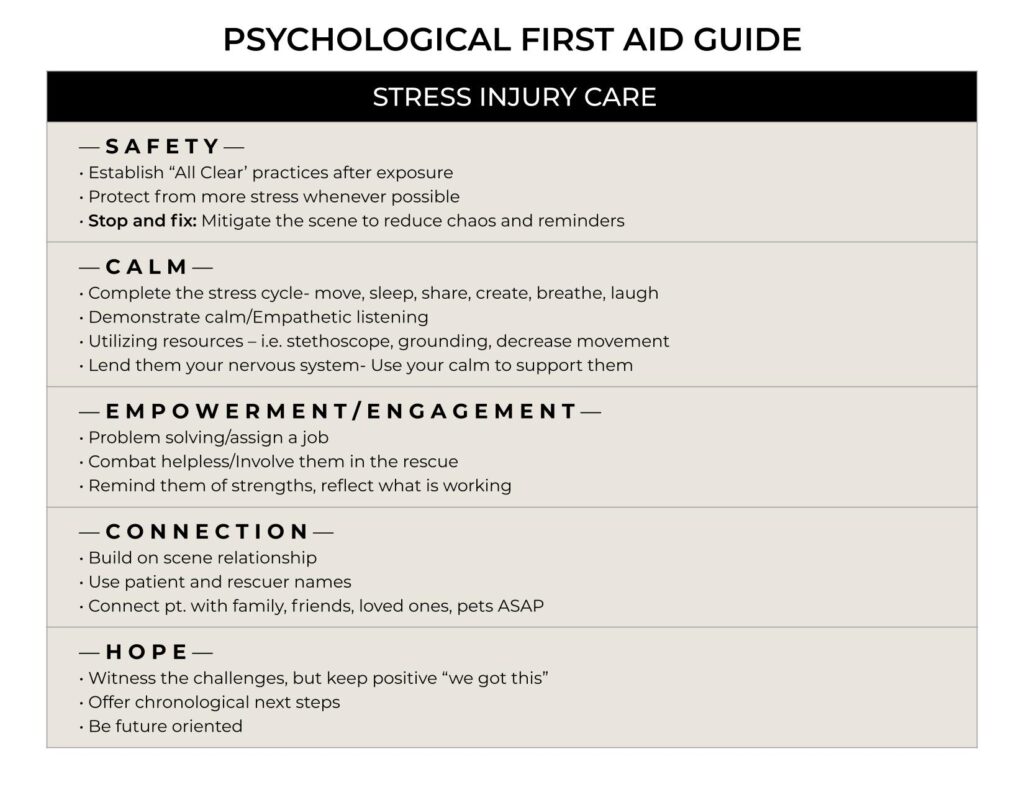IMSAFE
Questions to ask yourself before operating in stressful / dangerous situations. Use on yourself or with your partners to identify Illness, Medication, Stress, Alcohol/Drugs, Fatigue, Emotions that may impact your personal safety and the safety of those around you.
The IMSAFE checklist is a mnemonic device adapted from the aviation industry (private and commercial) that every certified flight instructor must teach to student pilots since it will help them perform a personal pre-flight health assessment to ensure they are fit to fly.
The idea of the checklist is to counter the several physical ailments and psychological stress causes that can have a negative impact on the pilot performance.
Responder Stress Continuum
The Stress Continuum was first created for use by the US Marine Corps for use in combat settings. Often used as a snapshot at how soldiers were managing stress in combat operations, it has now been applied to a variety of settings, including firefighters (Stress First Aid) and Law Enforcement and more recently has been adapted by Laura McGladrey for use by outdoor organizations such as NOLS and Outward Bound and the National Park Service.
The continuum can be used as a self-assessment tool, in order to provide those affected by single incident, or cumulative stress, to detect early and late changing reactions caused by overwhelming stress. It also serves as a communication tool, expanding on the universal “I’m fine,” to more precise expression of stress impact.
Finally, the stress continuum names the dynamic nature of occupational stress. It is common and predictable to move toward the red in times of unrelenting pressure, task saturation, acute traumatic stress exposure and exhaustion. It allows rescuers to name that experience. Although we will still serve every day if we’re in the orange or red, we do it at great cost to ourselves and our families, and we need tools and support to return to a more resourced place.
3-3-3 Traumatic Exposure Protocol
The 3-3-3- Exposure plan is an operational approach to recognizing and mitigating the predictable nature of acute stress on individuals and teams. There is growing recognition in the literature that supports what we have always known. The impacts of traumatic stress and loss outlast the rush of support that often occurs following an incident. Further, the impact of exposures like “near misses” and interaction with grieving loved ones are not recognized at all.
In the case of a traumatic physical injury, the mechanism of the injury is recognized and acknowledged, and monitoring begins immediately for ongoing injury. However, following traumatic exposure, potential for stress injuries goes unrecognized, and so, untreated.
The 3-3-3 is a self-evaluation tool that allows for pre-planning for the predictably unexpected exposures that rescuers and teams face, as well as a system for consistent assessment of occupational readiness. The 3-3-3 protocol consists of embedded evidence guided actions for mitigation, PFA (Psychological First Aid), and monitoring, TSQ (Trauma Screening Questionnaire).
Psychological First Aid Guide
The concept of Psychological First Aid is not new. It dates back to the first world war and battlefield support of those impacted by depletion and traumatic stress exposure. What is newly emerging is the body of evidence that suggests that specific early actions at the time of traumatic stress can mitigate the development of life altering stress injuries such as PTSD.
Psychological First Aid found here has been adapted for responders by responders, in our own language for Rescue. This PFA model seeks to support rescuers with tangible tools to help those we rescue, which in turn empowers the rescuer to do what we have given our lives to doing on scene; stabilize and mitigate injuries for our patients, and often, for each other.
Courtesy of the Responder Alliance (https://www.responderalliance.com).



